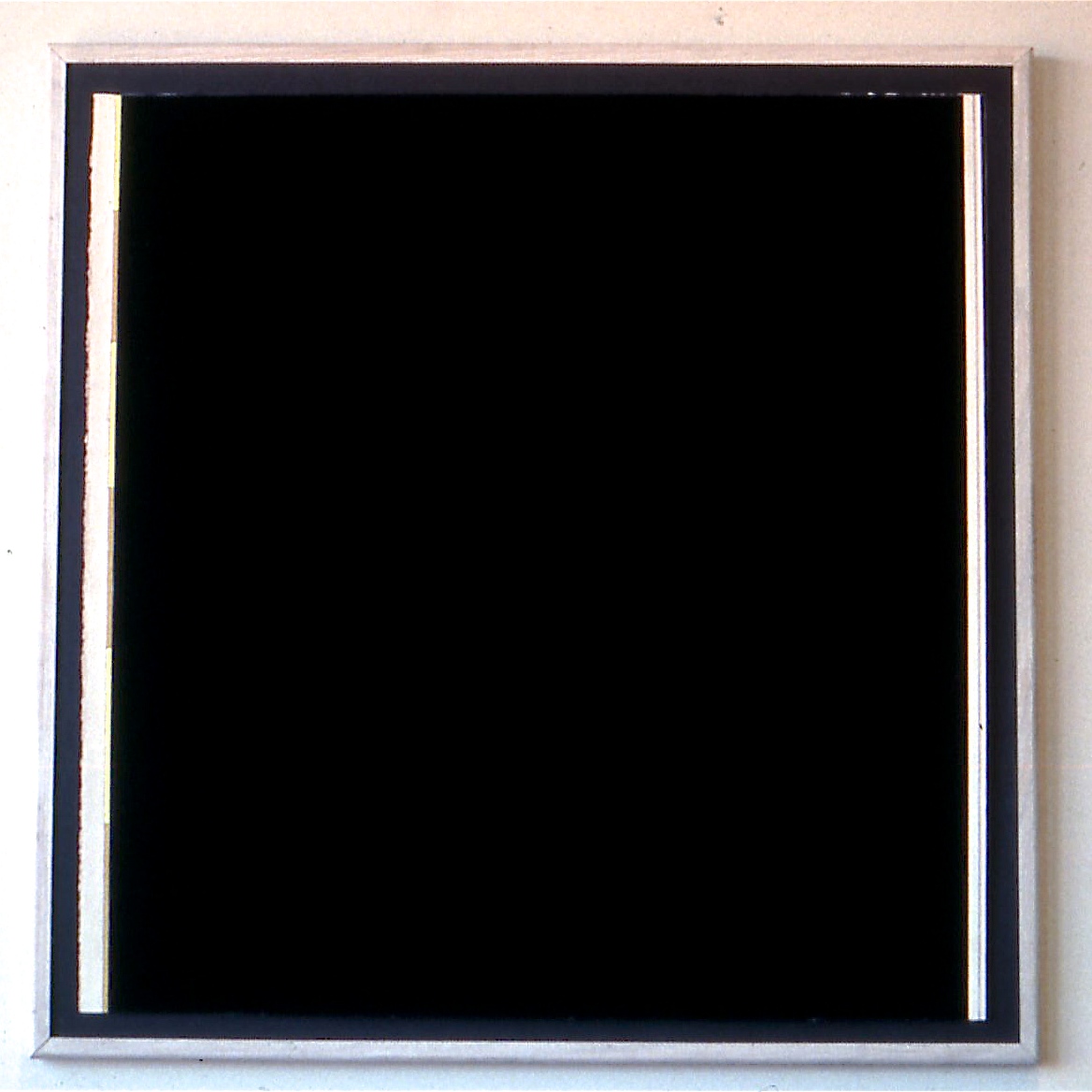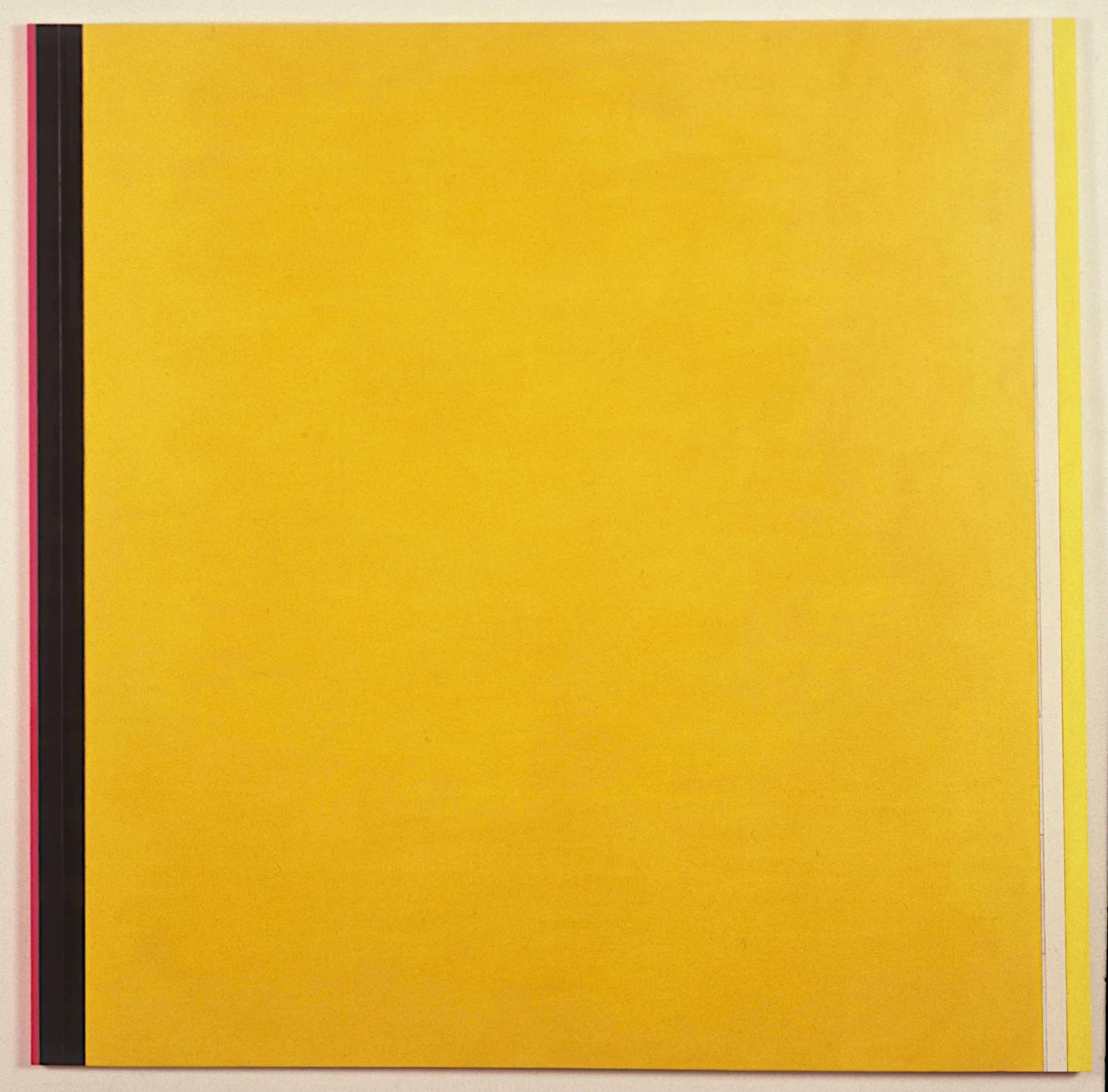Paintings, late 1980s
By the end of the eighties both changes to general attitudes to art, in the art world, that have happened (so far) in my lifetime had taken place. In a way that is of course only that, a way, the changes resemble those within the European self-image in first the sixteenth and seventeenth centuries and then again in the eighteenth. By the end of the seventeenth the Reformation was over, and Europeans had to settle for there being only one God as usual but no one true church. Then in the eighteenth they found out about China, and how it had a bureaucracy and other signs of high organization and refined civilization that seemed far superior to Europe’s achievements even during the Roman Empire, which suggested that Christians even when European might not be the Chosen People. When I started to exhibit (1970) it was still assumed that there was a general teleology to western art, and it was western art and that teleology which were overwhelmingly regarded as what art as a whole was. The rest of the world didn’t come in to it except as an outside, as had been the case for centuries. Wrought by disagreement though (European and American) art discourse may have been, but as ever that tended to be an affair of complementary divisions: Minimalism and Pop or even painting and objects versus conceptual art. By the end of the seventies that was over, in addition to all that was still going on, there were artists looking for a way out of or beyond (as it was still thought of) abstraction of either sort discussed in Michael Fried’s “Specific Objects,” Duchamp had been reborn in a big way for more than one reason, styles from the thirties had been reborn, big in the American manner, in Germany and Italy, and Julian Schnabel and David Salle had reintroduced a kind of figurative painting domestically. Art was over being about a common goal, whether implicit or explicit. The first big change had happened. Another ten years and the second big change was happening. By the end of the eighties art was becoming international in a way that went beyond the West, leading as is now clear to the sense that there cannot be one history for ‘the’ world’s art.
I have written about events and shan’t say much about them here, except in as much as the change affected my work as a painter. By the end of the eighties it was clear that from my point of view the majority of art in the galleries was interesting not quite as art so much as anthropology. Lot of stuff about culture, history and ideology not too much done with the senses. It was clear that what had been at the center of attention in the art world of New York and the world when I was first knocked out by seeing a Newman in the late sixties, and out of which I invented my own, had now become marginalized. Anything or most at least that had hitherto been marginalized was soon to be at the center, and broadly speaking that would mean everything but abstract painting. I remember a reviewers’ meeting at Artforum into which Annette Michelson popped her head asking if any of us would review performance art as well as the stuff in the galleries, and a couple went for it but with reluctance or at least not wild enthusiasm. That was in 1974, look at Artforum now.
These changes have had an effect on how painting is talked about and in a lot of cases done, but I have largely decided they don’t have much to do with what I’m trying to do. This is because I don’t want to treat painting as if it were a thing of the past, and also do not want to lose sight of it being made of space, where the last thirty of forty years have been full of paintings that are about being things.
In the case of painting being over, I reject the thought and have written extensively enough on the topic not to need to rehearse my arguments here, except to say that much of the rejection of abstract painting now common sounds like someone saying she is against the violin as such on historical grounds and that one should be using an electric guitar. Alternatively, that one may go on playing the violin but only as long as you don’t try to (let it) do anything new musically speaking. It is only an historical object and has no business seeking to embody the present. I use oil paint, very traditionally in terms of technique and such, and think its distance from video, acrylic, the photographic in general and plastic as such, are how it is able to say so much about them. That is not necessarily its main task, but it is an implicit and active function of what an oil painting made now can’t help but do. A similar thing could be said about making music on a violin in a world made generally of electronic sounds and music.
That is how I think of my work, and it’s why, from the late eighties onwards much of the criticism advanced against my work has seemed irrelevant to me. The late eighties into the early nineties was important to me, it was a period when I did a lot of different works, which brought together and also kept apart the two extremes which define painting for me—the tendency to make a deep space inherent in the white field, how paintings as things work on themselves and in the room. Apart from Blasphemy the work done during this time has no direct critical relationship to what’s happening in the world, but everything to do with ignoring (not acknowledging) aspects of it which I found and find unconvincing or not useful (contemporary German painting as a whole, for instance.) It is when it became clear to me that in some way there was room for both, the Village Group and the works I showed at Borgenicht, in what painting was (could do, be and be about) for me. They are pretty different. They have little to do all sorts of painting I might otherwise admire because all my work is about movement and space, what happens whether you want it to or not as opposed to what you decide it is as an historical thing. My idea of what a painting is and how I can do lots of things with it was refreshed during this period. From then on my technique would get more delicate and with luck my sense of the logic of the indeterminate has also developed since too.










































